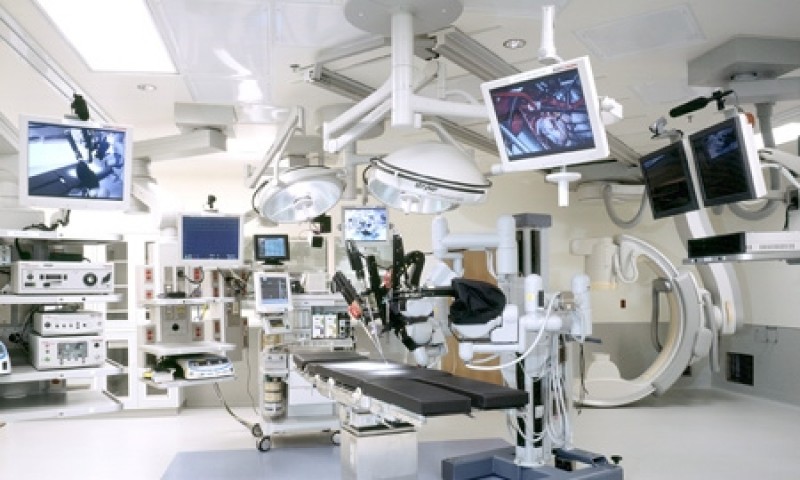 Register to receive a free Global Video and Integrated Operating Room Equipment Market Report Suite synopsis
Register to receive a free Global Video and Integrated Operating Room Equipment Market Report Suite synopsis
According to a new series of reports by iData Research, the Global video and integrated operating room (OR) market was valued at $4.2 billion USD and is forecast to exceed $5.7 billion by 2027. Operating rooms that are fully integrated are primarily profit centers for hospitals. It is not only beneficial for the patient but also for the hospital and staff if the workflow and efficiency are improved. Many newer functions have become standard aspects of integration in recent years, such as archiving, streaming, video conferencing, and workflow enhancement. With hybrid operating rooms, an image-guided surgical table and a dedicated imaging system are combined to take integration to the next level. With these operating rooms, hospitals are able to perform open and minimally invasive surgeries with flexibility and save time. Keep reading to learn more about Hybrid ORs.
How do Hybrid Operating Rooms Save More Lives?
It all boils down to the fact that these operating rooms are extremely versatile and time efficient. Imagine this: Cardiovascular, orthopedic, spine, neurosurgical, and vascular procedures can all be performed in the same room. In addition to these specialized surgeries, hybrid operating rooms can also be used for general surgical procedures. It is easier for hospitals with hybrid operating rooms to save more lives as they have the versatility and the equipment to do so.
What Factors are Working to Drive Market Growth?
Typically, upgrades to existing systems are what drive the hybrid operating room market. However, the increased demand for hybrid ORs is another factor at play. In recent years, there has been an increase in demand for hybrid operating rooms due to their flexibility. Additionally, hybrid operating rooms are more efficient and the need for efficient ORs is another driver of this market. Operating rooms tend to be the main source of revenue for hospitals and ambulatory surgical centers (ASCs). Therefore, as technology improves, there will be an increased demand for better functionality, which will ultimately drive market growth.
Which Factors Are Limiting Market Growth, if Any?
As a general rule, high-resolution, high-functioning, and high-tech equipment comes at a high price point. Although the majority of hospitals will invest in hybrid operating room equipment, upgrades to the existing infrastructure, which can include electrical wiring, fiber optic cables, ventilation ducts, and/or the complete destruction of the walls in the room to remove and replace outdated components, tend to limit market growth. In addition, equipment or upgrades tend to be difficult to install. Consequently, designers, suppliers, and end users often find it difficult to install components properly and cost-effectively.
What Does the Future Have in Store for Hybrid Operating Rooms?
Since hybrid ORs by definition require a fixed imaging system, integration companies, such as Steris, Maquet, Stryker and more, have been partnering with imaging companies, such as Siemens, Philips, GE and Toshiba, to include their equipment in hybrid ORs.
Many facilities are taking the next step following the introduction of hybrid ORs towards multimodality imaging room systems. Essentially, three ORs would be built side-by-side, with a general OR in the middle, a hybrid OR on the right and a Magneto-Optical (MO) imaging room on the left. This setup would have the ability to do MO imaging, MRI imaging, as well as angiography imaging and sometimes CT imaging. They would also be able to fuse the imaging through software, creating a full 3D image of the patient’s internal systems including the circulatory system, bone structure and other vasculature and tissue systems.
An example of this technology in practice is the Advanced Multimodality Image Guided Operating (AMIGO) suite at the Brigham and Women’s Hospital. The AMIGO suite makes use of an efficient three-room design across 5,700 square feet, offering immediate intra-procedural access to multiple imaging modalities. The suite is primarily being used for image-guided neurosurgery, but has the capacity to facilitate a greater range of minimally invasive procedures.
For Further Market Information
More can be found in a series of reports published by iData Research entitled the Global Market Report Suite for Video and Integrated Operating Room Equipment. The global market for video and integrated operating room (OR) equipment includes integrated OR components, hybrid OR components, surgical displays and picture archiving and communication system (PACS) monitors, surgical lighting, surgical booms, surgical tables, surgical headlights and surgical microscopes.
iData’s suite of reports on this subject cover over 70 countries spanned across 5 regions globally. These include a comprehensive analysis on units sold, market values, average selling prices, forecasts, as well as detailed competitive market shares and analysis of all major players and the impact of COVID-19.
Email us at info@idataresearch.net or register below for a Global Market Report Suite for Video and Integrated Operating Room Equipment synopsis.
 Register to receive a free
Register to receive a free